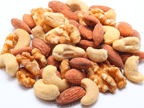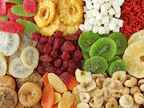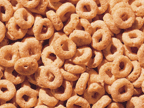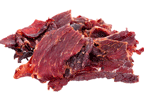Back to the basics advice from the top sports nutritionists on the block.
By Jennifer Ward Barber
In a sport where food is fuel, we sometimes forget that eating well is more than just bars and salt pills. But let's do a quick calculation: If you get eight hours of sleep a night, you're awake for 112 hours a week. A 20-hour/week training regimen leaves you with 92 non-training hours. That's a good chunk of your waking life not spent eating gels and drinking sports drinks.
As an endurance machine, what you put in your mouth during those 92 hours can make the difference between functioning at your best and getting rusty—or at worst, breaking down. So we consulted six of triathlon's top nutritionists for their key tenets of everyday nutrition.
1. Eat a quality daily diet
We all love our bars and gels for long rides, but what are we eating when we’re not swimming, biking and running? Matt Fitzgerald, author of "Racing Weight," says that general health is the foundation of endurance fitness, and a high-quality diet is essential for general health. "Most triathletes struggle to get leaner despite an appetite inflated by heavy training," Fitzgerald says. "A high-quality diet helps with that by satisfying the appetite in a calorically efficient way."
How does your diet measure up? Try keeping score with a system like the USDA's MyPlate Supertracker, or Fitzgerald’s Diet Quality Score in the aforementioned book.
Pay attention if:
- You’re prone to illness and injury
- You’re having trouble achieving body composition goals
You’ve nailed it when:
- Your plate is overflowing with fruits, vegetables, lean protein and complex carbohydrates
- You avoid junk foods (including large amounts of processed energy bars and gels) and fatty foods
- You limit your intake of alcohol to one or two drinks a day and keep caffeine to a minimum
2. Eat enough, starting with breakfast
Think you’re tired because you’re training so much? Think again, and then fix yourself a sandwich. Many endurance athletes, despite fueling their workouts properly while they’re out on the road, finish the day with a caloric deficit. The fear of gaining weight can result in an epidemic of under-fed triathletes.
"Triathletes think performance starts with training, but it starts with fuel," says sports nutritionist and author Nancy Clark.
Clark’s "Sports Nutrition Guidebook" can help you estimate your daily energy needs, which depend on height, weight loss goals and even physical habits. In the meantime, make sure you get started with a quality breakfast (Clark advises 800 to 1,000 calories, split up between pre-workout, during and after). Your first meal of the day should make up a third to a half of your daily calories, she says, to avoid getting tired in the evening and eating too much or too poorly.
Pay attention if:
- Your workouts aren’t enjoyable and don’t feel like quality sessions
- You think about food all the time
- Your hunger spikes in the evening
You’ve nailed it when:
- Your performance consistently improves
- You recover quickly
- You crave sweets infrequently (people who say they’re addicted to sugar are really just hungry, Clark says)
3. Practice meal timing
Ever attempted a long run after an all-you-can-eat brunch? Then you know that even high-quality foods, if eaten at the wrong time, can do your training more harm than good.
"An athlete should have some sort of nutrition approximately one to three hours before a training session," says Bob Seebohar, sports dietitian, exercise physiologist, and coach at fuel4mance.com. For short and/or high-intensity sessions under two hours, Seebohar says athletes can benefit from teaching the body to rely on fat stores for energy, which requires consuming fewer carbohydrates. For such sessions, he recommends liquid-based nutrition such as a sports drinks. For sessions more than three hours, Seebohar recommends consuming 200 to 300 grams of carbohydrate one to four hours beforehand.
What you eat after a workout—when the muscles are primed to accept nutrients—matters just as much. The 30 to 60 minutes immediately following long and high-intensity workouts are especially important. Seebohar recomends consuming 1 to 1.2 grams of carbohydrate per kilogram of body weight and 10 to 25 grams of protein after a workout. Fat, which inhibits carbohydrate absorption, should wait until a few hours later.
Pay attention if:
- You’re prone to GI distress in workouts (can be due to consuming too many carbohydrates)
- You’re low on energy or feel heavy and sluggish before and during workouts
You’ve nailed it when:
- You feel satiated, energetic and light in all your workouts, no matter what time of day
4. Monitor macronutrients
Fueling your body well goes beyond eating your fruits and veggies. Macronutrients—carbohydrates, fats and proteins—have several important functions in the body, and it’s crucial to give your body the right amount of each.
According to Jamie A. Cooper, author of "The Complete Nutrition Guide for Triathletes," the exact percentages of each will vary depending on what type of triathlete you are; an IRONMAN triathlete will need slightly more carbohydrate (the body’s primary energy source) than a short-course triathlete logging fewer training hours. But as a rule of thumb, he says athletes should aim for getting 45-65 percent of daily calories from carbohydrate, 15-20 percent from protein and 20-35 percent from fat.
Pay attention if:
- You feel low on energy before, during and after your workouts
- You frequently feel fatigued
You’ve nailed it when:
- You recover quickly, even after high-intensity sessions
- You can't remember the last time you got sick, or injured
5. Hit the hydration sweet spot
Proper digestion, nutrient absorption, healthy skin, optimal brain power—you name it. They all rely on hydration. Which, when you're not on the course, is about achieving the right balance of fluids and electrolytes (minerals not only essential to our sports performance but our overall health).
"As prevalent as the eight glasses a day idea is, there really is no basis to this number," says Pip Taylor, nutritionist and professional triathlete. "How much you need to drink varies greatly between individuals based on size, sweat rate, activity levels, weather and altitude." Taylor advises paying close attention to your thirst and alternating plain water with low-sugar electrolyte drinks to top up your salts and minerals.
Pay attention if:
- You feel fatigued, nauseated, have dry lips and throat, headaches and reduced ability to concentrate at work or complete your workouts
- You urinate frequently through the day (and when you do, it's water-colored), or you hardly urinate (and it's dark in color)
You’ve nailed it when:
- You’re aware of your daily hydration needs based on what kind of work you do and where you live, and you keep up with them.
- Your urine is consistently straw-colored
6. Maintain a healthy relationship with food
Triathletes are obsessive types. We log our workout hours and race results with passion, and we monitor our bodies like a science experiment. When it comes to food, this relationship can get tricky. Despite our bodies crying out for nutrients, we’re often more prone to denying ourselves and feeling guilty than perhaps we should be.
"Eating should always be healthful but it should also be pleasurable," says Marni Sumbal, clinical dietitian and age-group triathlete. When she counsels her athletes, she looks for bad habits like eating behind a computer screen, skipping meals and negative emotions surrounding food, and steers them toward a more forgiving attitude.
Pay attention if:
- You tend to eat mindlessly
- You have a long list of "do not eat" restricted foods (you may be denying yourself too much)
You’ve nailed it when:
- You eat slowly and at a table without distractions
- You consume real, whole foods
- You avoid pre-packaged convenience foods and prepare meals in your own home more frequently than you eat out
Reprinted from www.ironman.com
 about 1 ounce (150-200 calories, depending on the type of nut). Store individual packets of nuts or a small canister in the swim bag.
about 1 ounce (150-200 calories, depending on the type of nut). Store individual packets of nuts or a small canister in the swim bag.
 Dry Cereal: Go for small boxes or make your own baggie of dry cereal. If you’re interested in low sugar types, opt for original Cheerios, Kix, Post Spoon-Size Shredded Wheat, or Kashi 7 Whole Grain Puffs. Better yet, mix and package dry cereal
Dry Cereal: Go for small boxes or make your own baggie of dry cereal. If you’re interested in low sugar types, opt for original Cheerios, Kix, Post Spoon-Size Shredded Wheat, or Kashi 7 Whole Grain Puffs. Better yet, mix and package dry cereal  with dried fruit and nuts for a homemade trail mix.
with dried fruit and nuts for a homemade trail mix.